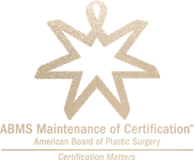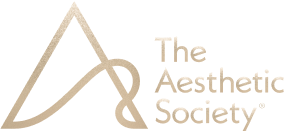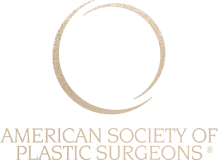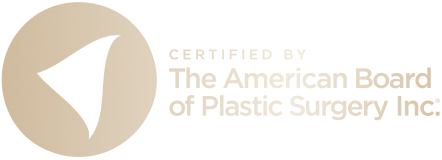















Thick or thin, male or female, no matter the age — for some people, stretch marks are unavoidable. Stretch marks, also referred to as striae, are stripe or line-like lesions that develop when the skin grows rapidly. Considered a cosmetic issue, stretch marks can present as white, pink, or red and often appear during pregnancy, after weight gain, or throughout hormonal shifts, such as puberty. You can also be genetically predisposed to develop stretch marks.
Despite what treatments you see advertised, you cannot permanently remove stretch marks without surgery. It’s important to understand that when you hear “removal,” what we are really talking about is lessening the appearance of stretch marks to help you feel more confident and comfortable in your skin. With that understanding, there are a variety of treatments, including laser treatment, for stretch mark “removal.”
Stretch marks are streaks that form in the dermis, the layer of tissue beneath the top layer of skin. Stretch marks develop when the skin stretches (or shrinks!) too quickly, which causes the collagen and elastin fibers that support the dermis to rupture. As the skin begins to heal, stretch marks can appear in the affected area as slightly raised pink, red, or reddish-brown scars that can sometimes feel itchy.
Significant skin changes, such as weight gain and loss or muscle gain, can cause stretch marks. Periods of hormonal fluctuations, such as pregnancy and puberty, are also primary causes of stretch marks. Likewise, these scars can develop from an abnormal formation of collagen in the skin or medication that interferes with collagen formation, such as the prolonged use of cortisone.
Both men and women are susceptible to stretch marks at any age. Women tend to develop stretch marks on their breasts, abdomens, hips, thighs, buttocks, and around the belly button. Men typically get stretch marks on their arms, thighs, buttocks, and backs. Stretch marks are initially darker in color, but can fade to white over time with a sunken or different texture than normal skin.
Stretch marks are considered scars. Like any type of scar, stretch marks are permanent. However, that doesn’t mean you can’t make your stretch marks less noticeable — or treat the itchiness and irritation they can cause.
If you research natural remedies for stretch marks, you’ll read that applying almond oil, cocoa butter, olive oil, or vitamin E and suntanning can help reduce their appearance. However, there is no medical-based evidence that any of these topical remedies can actually fade stretch marks, though they can help to hydrate the skin, which helps with healing. Tanning cannot get rid of stretch marks either, and can even make them more noticeable since they will not tan like normal skin.
There are a variety of stretch mark creams, lotions, and gels on the market, but like natural remedies, they are not proven to be 100% effective in reducing the treatment of stretch marks. Topical solutions have little effect on mature stretch marks or scars that have already faded to white and depressed the skin. However, researchers believe creams, lotions, and gels may help fade early stretch marks that have freshly developed.
Prescription topicals for stretch marks include hyaluronic acid and tretinoin. Hyaluronic acid occurs naturally in the skin and has been shown to help accelerate healing and reduce scarring, though it is not a proven remedy for stretch marks. Tretinoin is a vitamin A derivative that helps the skin rebuild collagen fibers, which has been shown to improve the appearance of new stretch marks.
At our Chelmsford plastic surgery practice we offer several proven medspa treatments to improve the appearance of stretch marks, including the ICON 1540 fractional laser (known as the ‘stretch mark removal laser’). The ICON 1540 laser is the only FDA-approved laser for stretch mark removal on the entire market. The laser emits pulses of energy that stimulate collagen production in the treatment area to improve the appearance of the stretch marks. This laser is also very effective for surgical scars as well to help optimize their appearance.
Most patients see a 20 to 60% improvement in the appearance of stretch marks after just a few ICON 1540 laser treatments. And because the ICON 1540 uses a laser wavelength of 1540 nanometers (nm), this stretch mark removal laser can safely be used on patients with darker skin.
Depending on your consultation, we may also discuss other medspa treatments that can help further alleviate the appearance of stretch marks, such as:
If stretch marks appear in the lower abdomen — which is a common area of concern for women who have been pregnant and anyone who has gained or lost a significant amount of weight — you can remove stretch marks, not just improve the appearance. A mini or full tummy tuck, which removes excess skin in the midsection, can completely remove the affected area of skin to totally eliminate stretch marks.
Laser stretch mark removal is the most effective method to improve the appearance of scars. While laser treatment cannot completely remove stretch marks, it can reduce itching and irritation as well as improve skin texture and tone. In fact, each session of the ICON 1540 laser stretch mark removal treats approximately 20 to 25% of the skin and can improve the appearance of stretch marks by up to 60%.
Multiple laser skin resurfacing treatment sessions are recommended depending on the clinical situation, in order to achieve the desired results, which occur over a several month process.
A medical consultation is crucial before laser stretch mark treatment — both for a provider and a patient. A consultation allows a medical provider to identify the best solution for your needs and aesthetic goals, and as a patient, a consultation allows you to gauge your comfortability with a provider’s skills, experience and proven results. Your results are dependent both on the technology used and the expertise of the provider performing the service.
If you are looking for a laser skin resurfacing Boston area plastic surgeon, I’m dedicated to delivering the best laser skin resurfacing Chelmsford has to offer. Schedule your consultation at the Chelmsford Center for Plastic Surgery which serves the upper Massachusetts and lower New Hampshire areas.
Plastic surgery isn’t just about people changing their look—it's about making you feel good about being you. Whether you need breast augmentation, a breast lift, liposuction or Botox, Dr. Dina Eliopoulos is here for you. For over 20 years, patients have sought out the care and results that Dr. Eliopoulos can create in her beautiful Chelmsford, Massachusetts office. The peace of mind that comes from a board-certified, residency- and fellowship-trained plastic surgeon is hard to parallel. Schedule a consultation with Dr. Eliopoulos today to experience the difference for yourself.